Last-Minute NYC Holiday Gift Guide 🎁
We’ve created a holiday gift guide with presents for the intrepid New Yorker that should arrive just in time—


During the era when many of New York City’s most iconic buildings were constructed, there was a dream to make these new cutting-edge skyscrapers completely self-sufficient. Though steam did power many of the city’s buildings, the system installed by the New York Steam Company did not extend everywhere, necessitating alternative methods. As such, if you have the opportunity to be taken deep below the streets in some of the city’s most famous skyscrapers, you may see incredible relics. There is the New Yorker Hotel‘s system, deemed a scientific milestone by the Institute of Electrical and Electrical Engineers for having the “largest (DC) generating plant in the United States” – it made power for 35,000 people, keeping the hotel off the grid for thirty years. The Flatiron Building also contains remnants of a power plant, and it is one of the most impressive we’ve seen.
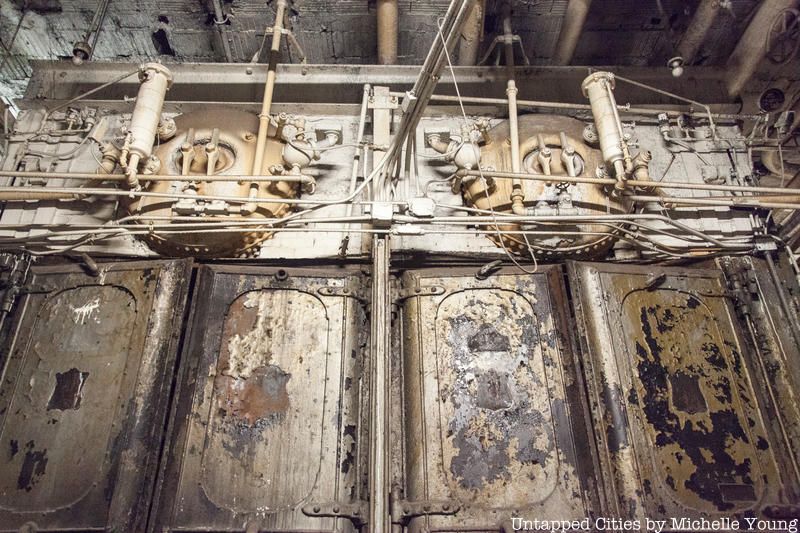
Three levels down under the Flatiron Building, you will find three massive original 1903 coal-fed boilers that are still in place next to a far smaller more modern boiler. Coal was stored in storage units that have been since cinderblocked up. There used to be an elevator that would transport the coal down from street level, and behind a door in the wall you can still see up that shaft to the sidewalk and sky. This system is similar to, but pre-dates the power plant below the New Yorker Hotel. Though rusted, with paint chips flaking from the many coats applied over the years, the complexity and scale of the system is apparent.
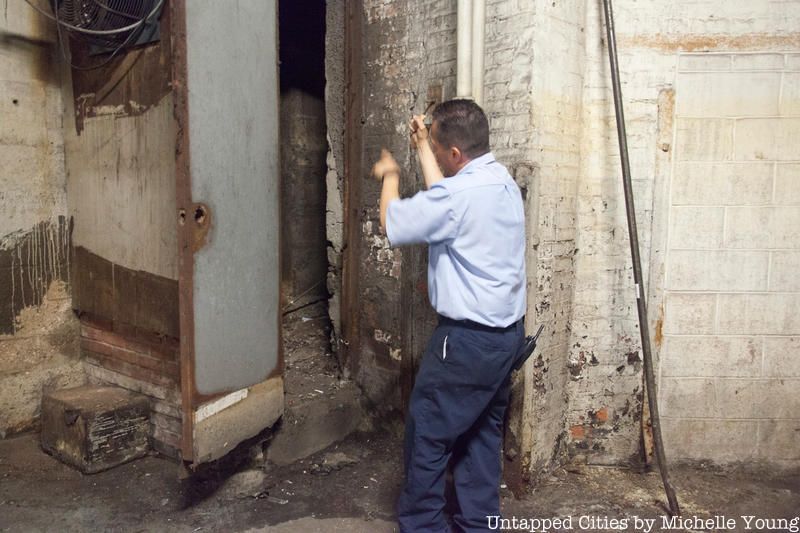
The elevator shaft that once transported coal down from the street
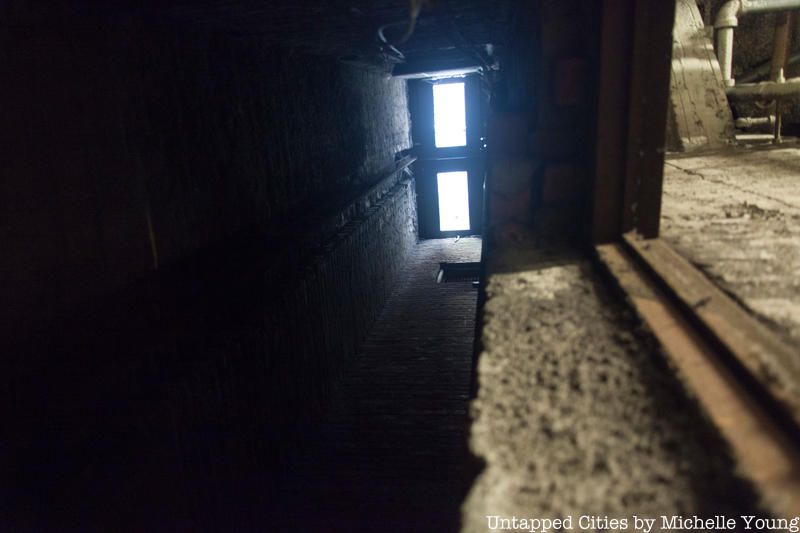
Looking up the shaft
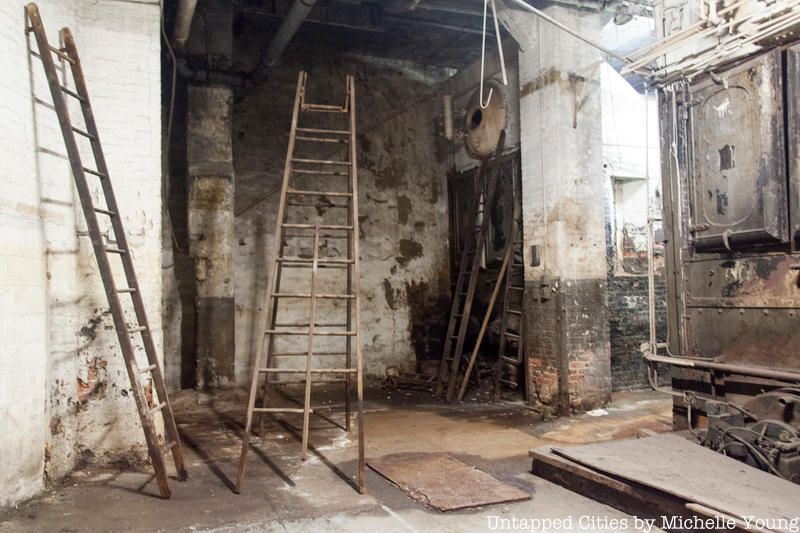
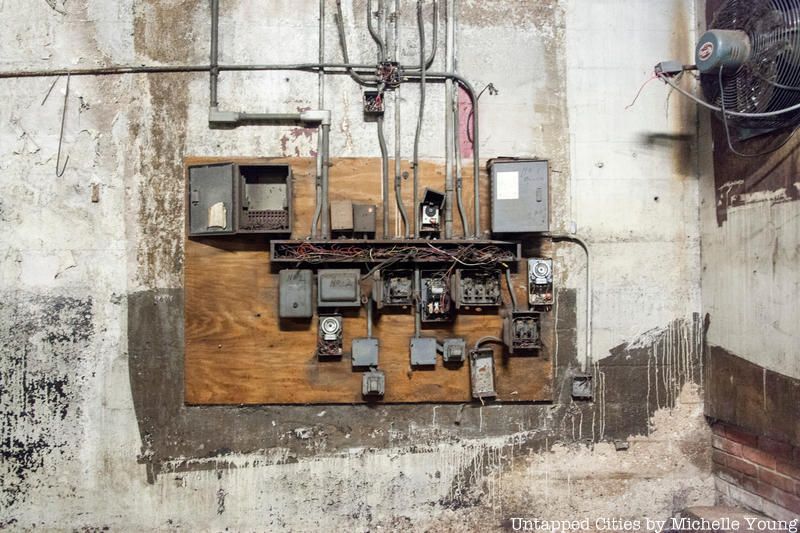
On a basement level just above the boilers sit the remnants of the water system that once supported the hydraulic elevator system. Even though a portion was removed before, the massive water tanks and pipes still impress, as does an original marble sheath with the engraved words “L.H. Prentice Co. Engineers & Contractors. New York & Chicago.”
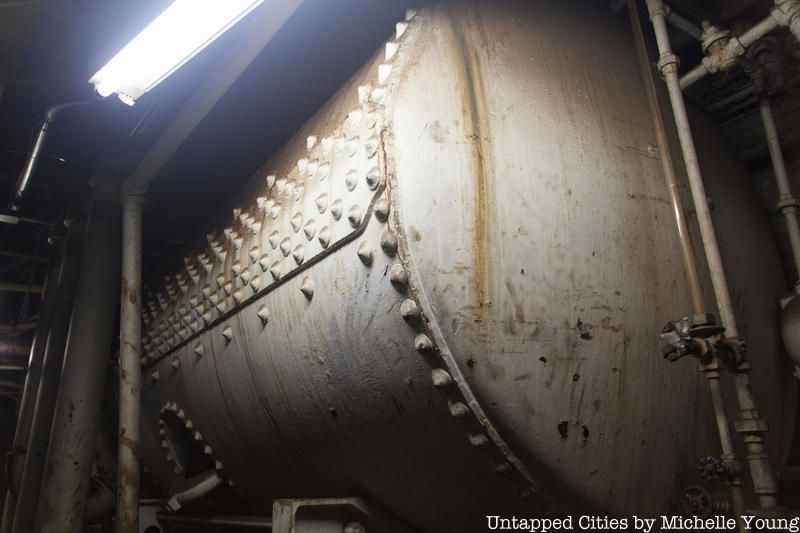
In practice, the elevator system was a little less cutting-edge than its power plant counterpart, offering both extremely slow travel times and regular flooding. “If you jumped on in the lobby and went to the 20th floor, it could take you ten minutes,” Sonny Atis, the long-time superintendent of the landmarked building, told us. “We had many a flood,” says Sonny, and compares them to the intensity of the flood in the Ten Commandments. “[For] a lot of the repairs, we didn’t need a mechanic. We needed a plumber,” he declares.
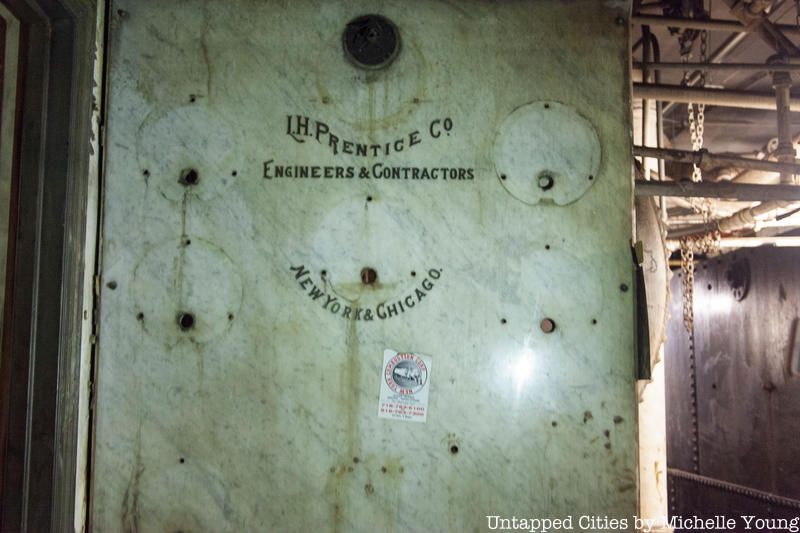
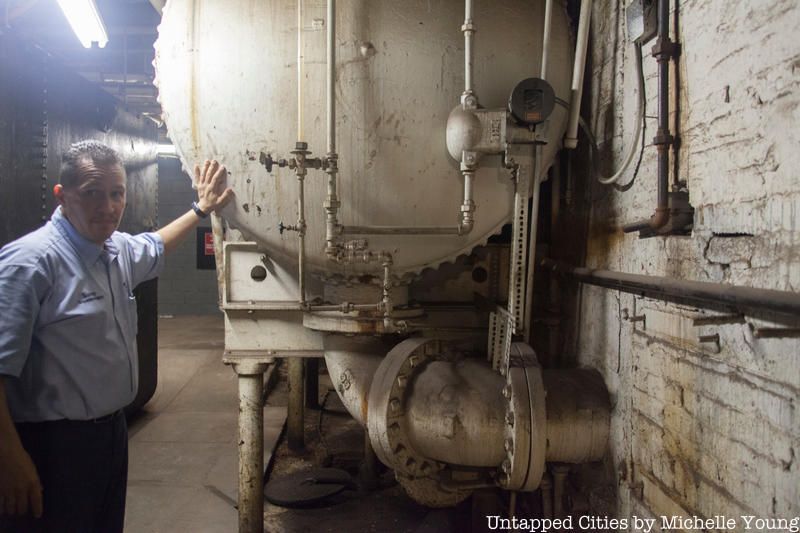
While the Flatiron Building’s basements have not been opened for the general public to see, it is clear that Sonny has become the steward of the building’s hidden histories. His collection of Flatiron Building artifacts extends beyond his office and his fascination with its engineering history is infectious. With the latest modernization of the Flatiron Building, which will include installation of central air and heating, new elevators, and an opening of the floor plates, the engineering history of the building becomes even more important to retain.

Indeed, inside Sonny’s office, he shows us some contraptions on the floor. It’s a part of the original water hydraulic system, he says, which gave him much trouble when he first started. If you misjudged while operating the system, you could crash the elevators causing the two ball-like pieces to open up and get stuck in the wall, which had to be manually released at the top of the elevator shaft. It’s where the original phase “balls to the wall” comes from, he says.
Next, check out the view from the roof of the Flatiron Building, and the Top 10 Secrets of the Flatiron Building.
Subscribe to our newsletter